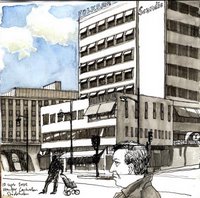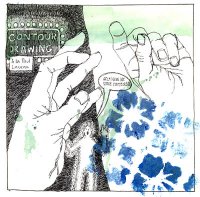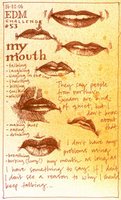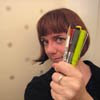

The book is a rebound leather cover of an old Runeberg novel that I ripped out (sorry, Swedish/Finnish literature-lovers, but have you ever tried actually reading his stuff??). The new signatures in it are joined together with a technique I found in “Making and keeping creative journals” (Suzanne Tourtillott, Lark Books), where you sew in linen tape across the spine of the text block for stability. Then I glued the whole text block into the cover with the pink endpapers. The book is quite small, 17,5 x12 cm (about 7 x 4.7 inches), and very sturdy. I´m actually not sure what paper I used in it, since I decided to use up paper I had left from another project. It goes well with pencil/pen/ink/watercolors, but is perhaps a bit thin if you want to get really messy with wet media.




The first three colour tests are from my small watercolour palette with only six colours in it. I tried out various mixes first just to see the overall impression I got from the colours, and they looked perfect for landscape painting but I missed a clear orange and purple mixes so I changed the red color from perylene maroon to permanent madder lake light and now I´m pretty content with the mixes I get.
My small palette is always with me, I use it mainly with a Niji waterbrush, and I want it to be as versatile as possible without too many colours in it. (If you´re interested, the colours are cadmium yellow dark (schmincke), permanent madder lake light (rembrandt), ultramarine (don´t know what brand, I borrowed a tube from a friend to fill my little half pan…), phtalo blue (no brand here either), burnt sienna (winsor & newton) and raw sienna (winsor & newton).


The other two colour tests are with my latest two additions to my bigger watercolour palette. I threw out green gold (it looks very much like quinacridone gold with a little blue shade in it, so I figured I didn´t really need it) and replaced it with winsor green blue shade (gives marvellous green and gray mixes, among others). And then I changed an echtviolett to quinacridone magenta – it´s impossible to “raise” a purple color to pink, but easy to mix a purple from magenta, so I think the magenta gives me a lot more possibilities. The mixes on these images are these two new colours mixed with all the others in my palette, just to get to know them better.





